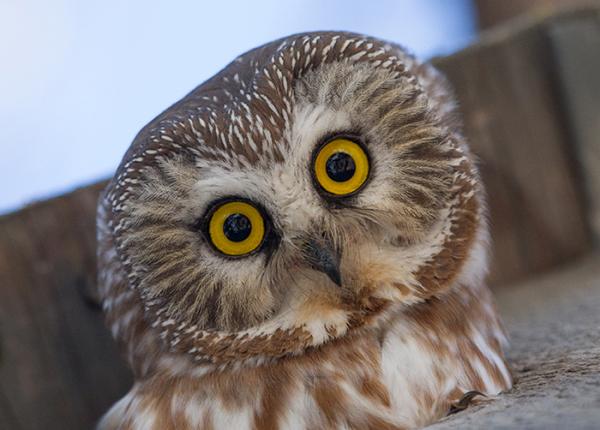From Kevin Lohman
The young Great Horned Owls are learning to fly, but they need lots of practice. One owl made it to a branch on a eucalyptus tree, but landed upside down. It hung there for a moment before releasing the branch and heading to a nearby cypress tree.
Santa Cruz, California
The other week, baby GHO at work took off and hung like this from the cyclone fence roof when it didn’t like me going into its favorite corner to clean up. It looks like they’re in a tough predicament, but it just seems to be a thing they do. They’re strong enough to hold on, and they can flap well enough to land when they let go.


But can it do a 4 g negative pushover?
You know…it just might be able to even better than Tom Cruise… 🤔
Negative Gs can cause redouts from blood pooling in the head. Our blood vessels tend to constrict and are fitted pretty snuggly to our bone structure. Owls on the other hand have their head blood vessels running through air pockets in their vertebrae. These channels leave about 10x the required space for the blood vessels, and their blood vessels do have the ability to expand.
Img Source
This is the amazing anatomy that allows owls to turn their heads that famous 270 degrees. Since they can’t swivel their actual eyes, the whole head needs to turn every which way. If their air and blood flow were subject to the opposing forces like it is for humans, they’d choke themselves out trying to look around. Longer explaination here.
And just searching quickly, most sources put regular flight for most birds reaches 2-4 Gs, with some maneuvers reaching 10-14, and some fancy birds like peregrine falcons hitting 25G. Owls typically don’t fly too fast because it would be counterproductive to flying silently, plus their flight feathers aren’t as dense, so I think the structure would give out before they could generate enough thrust.